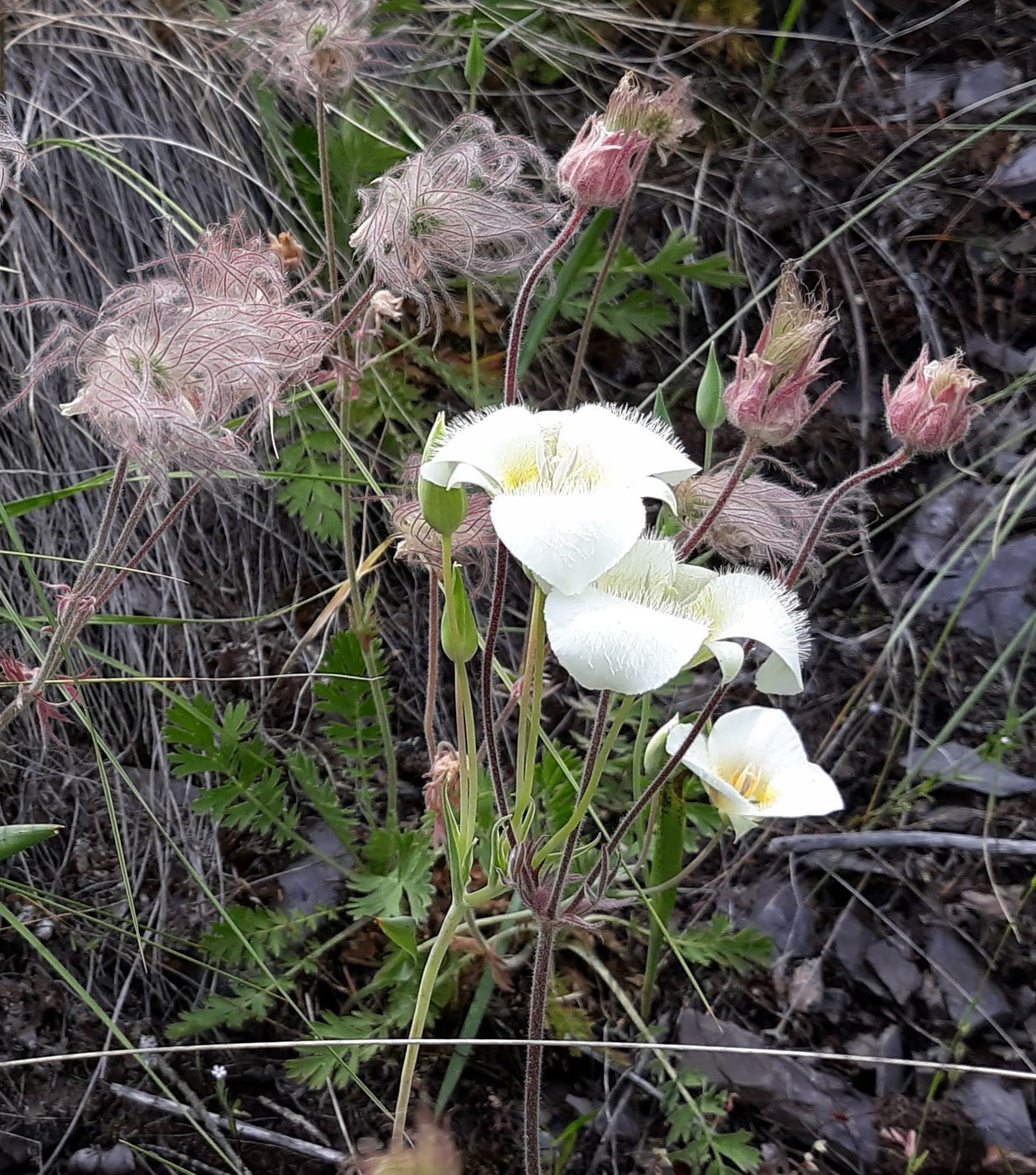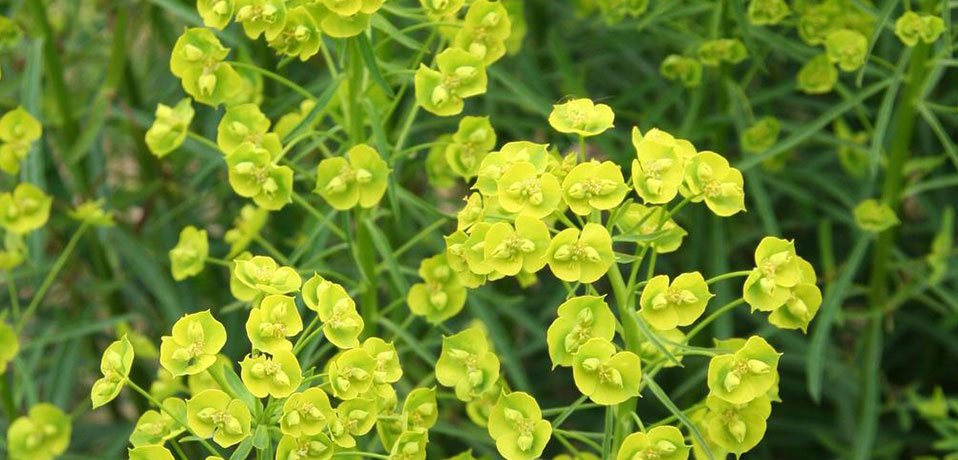
Native Plants and Noxious Weeds
Montana Native Plants
Healthy native plant communities are part of the breathtaking experience of living in the Flathead, and visiting Glacier. They are also essential to us and our local ecosystem, providing us with clean air and water, and animals with critical habitat and food.
Native plants and animals have evolved together over thousands of years and thrive in our local soils and climate. Local pollinators include native bees, honey bees, butterflies, moths, beetles, birds, and flies. They pollinate over 40 agricultural crops along with flowering native plants.Without them, our local crops, native wildflowers, birds, and elk that feed on them could not survive.
By landscaping with native plants around your home or business, you can support the Flathead’s beautiful plant diversity and extend a helping hand to local birds, pollinators, and wildlife.
ESSENTIAL TIPS TO GET YOU STARTED LANDSCAPING WITH NATIVE PLANTS:
-
For example, riparian, grassland, forest. This step will determine which native plants will flourish naturally on your land. They also offer food and shelter for native birds and wildlife.
-
By landscaping with native plants around your home and business, you can support the Flathead’s beautiful plant diversity and benefit birds, pollinators, and wildlife.
-
If it becomes necessary, minimize any disturbance and promptly reseed disturbed areas with native seeds to keep weeds out.
-
Water and weed your native plants until they are well established. While it may take several years for them to thrive, once established, native plants typically require less watering and do not need fertilizers.
-
Create your own native pollinator garden to attract and support native butterflies, bees, and birds. Contact your local Conservation District for starter seed packages and assistance (5ft2, 50ft2, or 500ft2 plots) at Flathead CD or Lake County CD.
-
Instead, watch and enjoy the insects and birds that flock to your native plants, fostering a harmonious ecosystem.
-
If you need assistance, reach out to your local Conservation District. They can provide valuable advice on how to get started and help you order native plants from the Montana Conservation Nursery. Also, check these Flathead Valley Native Plant Landscaping resources.












Noxious Weeds in Montana
Noxious weeds have a destructive impact on Montana's landscape by displacing native plant species. They reduce forage and habitat for wildlife and livestock. They can also be destructive and expensive to our agricultural landscape and recreational opportunities. Some weeds, like cheatgrass, dry up by mid to late summer and increase risk of fires.





COMBATING NOXIOUS WEEDS AND OTHER INVASIVE SPECIES
-
Learn more about noxious weeds and how you can take action at mtweed.org, or MSU Extension. Contact your County Weed District to help you identify plants.
You can use the “Plant Sample Submission App” to submit a picture to the Schutter Diagnostics Lab at the Montana State University for identification.
-
Weeds often establish in newly disturbed areas that have been cleared, burned, or overgrazed. Promptly reseed disturbed areas with native seeds or plants to keep weeds out. Talk to your neighbors and develop a cooperative weed management group. It is more effective long-term.
Before traveling, clean or brush off your shoes and clothes, pets and stock, vehicles and tires and any equipment that can carry seeds or plants.
Dispose of seeds and plant parts properly. Check how to avoid transporting seeds at playcleango.org.
-
Some weeds can be dug or pulled by hand, while others can be controlled by mowing or grazing livestock at the appropriate growth stage for your target invasive plant. Other weeds may be treated with synthetic or organic herbicide. This requires careful application as overuse or misuse can greatly harm pollinators and native plants or create resistance in weeds.
The most effective approach involves combining multiple strategies, known as Integrated Pest Management (IPM), to prevent the introduction and establishment of weeds and pests by treating them with various control methods.
IPM strategies include checking throughout the growing season to spot weed seedlings, hand pulling, mowing, applying herbicide, and reseeding treated areas or exposed soil with native grasses and plants.
Most landowners can manage weeds themselves or with the help of a contractor. For information on control and eradication practices, as well as potential cost-share programs, visit your local county weed department: Flathead Co Weeds | Lake Co Weeds.
For information on IPM strategies, contact your local County Extension agent: Flathead Co Extension | Lake Co. Extension.
-
Most weeds can be controlled without using pesticides, and you can still grow a healthy lawn and garden. Organic gardens and lawns support healthy soils and beneficial organisms and insects like bees and other pollinators. They can also save time and money, and require less water and help grasses withstand heat and drought.
There is also growing evidence that links herbicides to health problems among children, adults, and pets.
-
If you graze livestock on your land, you can plant perennial grasses that are good for forage, increase plant diversity, are beneficial to soil organisms and insects, and may reduce your water consumption. Reach out to you local County Extension office, Conservation District, or Natural Resources Conservation Service for guidance.
-
There are a number of aquatic invasive species (AIS) that can reproduce and spread rapidly, displacing native species, clogging waterways, irrigation and hydropower systems, and degrading our rivers and lakes. In western Montana, recreation is an important part of our economy and way of life. Aquatic invasives not only threaten recreation and tourism, but can also cause public health problems. The field guide “Aquatic Invasive Species Threatening the Crown of the Continent,” can help you identify and prevent AIS.
Follow 3 simple steps, Clean, Drain, Dry, to stop transporting AIS on boats and watercraft. Learn more at our Living by Water section.
Resources
Native Plants
Plant Natives
Montana Conservation Seedling Nursery
Noxious Weed Identification
MSU Extension: Montana Noxious Weed Information
Weed Management
Flathead County Weed Control District
Lake County Noxious Weed Management
Montana Weed Control Association
Montana Biocontrol – Providing Biocontrol, Leadership, Coordination & Education for the State of Montana
Aquatic Invasive Species Prevention
Others
